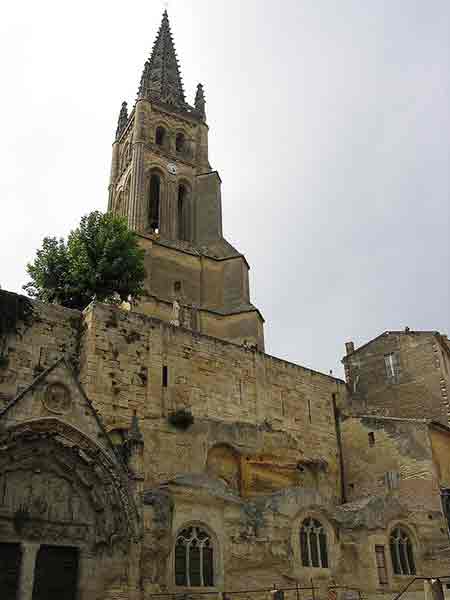
This monolithic church is an underground religious building dug at the beginning of the 12th century in impressive proportions, 38m long and 12m high.
In the heart of the city, the church recalls the religious activity of the city in the Middle Ages and intrigues by its unusual design.
If it reveals itself to the visitor's eyes by the position of a 68-metre high bell tower, it then hides behind the elegance of three openings in the facade and an often closed Gothic portal.
From the ancient Greek "mono", meaning "unique" and "lithos", "stone", its name describes a building dug into the limestone plateau and whose current structure still forms a single block.
The reason for its construction is probably due to the development of the city around a pilgrimage activity to the tomb of the patron saint Saint-Emilion, a Breton hermit who settled in a nearby cave in the 8th century. It should not be forgotten that, in order to edify the faithful, the ambition was to build a reliquary church big enough to accommodate hundreds of pilgrims.
Sculpted in the 12th century, painted in the 14th century, devastated in the 16th century, mishandled in the 18th century during the Revolution and restored in the 20th century, such is its existence...
From the story of the monk founder of the village, to the excavation of the surprising monolithic church, the visit will make you discover 4 monuments: the hermitage of Emilion, the Chapel of the Trinity and its medieval paintings, the catacombs as well as the underground church.
It is still consecrated today and regularly hosts religious ceremonies, sometimes concerts, but also ceremonies of enthronement of the brotherhood of Saint-Emilion wines - La Jurade.
Grand Saint-Emilion Tourist Office
Place du Clocher
33330 Saint-Emilion
Tel: 05 57 55 28 28
accueil@saint-emilion-tourisme.com
Translated with www.DeepL.com/Translator
(free version)






